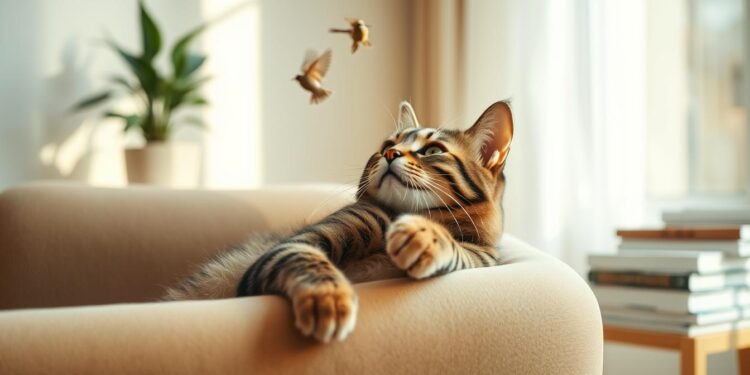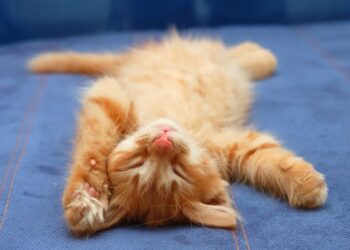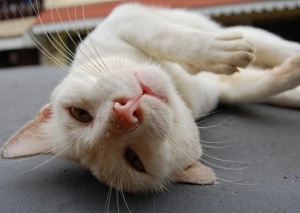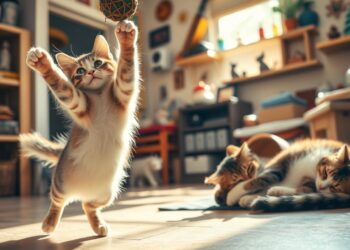As a cat owner, you want to provide the best possible life for your feline companion. However, unintentional mistakes can lead to behavioral problems and stress in cats. Understanding common cat behavior mistakes is crucial for creating a harmonious relationship with your pet.
Cats have unique natural instincts and behaviors that need to be respected. By recognizing and correcting common errors, you can significantly improve your cat’s quality of life and strengthen your bond. This comprehensive guide will explore the five most common mistakes cat owners make when interacting with their cats, providing practical solutions to address them effectively.
Understanding Your Cat’s Natural Behavior
Understanding the natural behavior of cats is crucial for building a harmonious relationship with them. Cats are natural predators with instinctive behaviors that have evolved over thousands of years.
Why Cats Behave the Way They Do
Cats behave based on instinct rather than spite or malice. Their actions are driven by hardwired feline behaviors, including hunting, territorial marking, and social interactions. Domestic cats retain the same behaviors as their wild ancestors, despite domestication. This understanding is crucial for proper cat care, as many behavior problems stem from owners not recognizing or respecting these natural feline instincts.
- Cats communicate primarily through body language.
- Misinterpreting these signals can lead to frustration for both cats and humans.
- Respecting a cat’s natural behaviors includes providing outlets for hunting, climbing, scratching, and territory marking.
The Importance of Respecting Feline Nature
Recognizing the importance of scent in a cat’s world helps explain many behaviors that might otherwise seem puzzling. Cats are both predators and prey animals, which explains their sometimes cautious or seemingly contradictory behaviors. Working with rather than against your cat’s natural instincts creates a more harmonious household and prevents many common behavior problems.
Mistake #1: Inappropriate Play Techniques
One of the most common mistakes cat owners make is using inappropriate play techniques. Engaging in play with your cat is crucial for their physical and mental health, but it must be done correctly to avoid creating or exacerbating behavioral issues.
Using Hands as Toys
Using your hands as toys during play can lead to undesirable behaviors in cats. When you wiggle your fingers or allow your cat to bite your hands, you’re unintentionally teaching them that biting human flesh is acceptable. This can result in biting becoming an effective form of communication for your cat whenever they want to make a point.
- Using hands as toys leads to biting and scratching behaviors.
- Cats learn that human skin is an appropriate target for their hunting behaviors.
- This creates confusion about when biting is acceptable.
Preventing Successful “Catches” During Play
It’s essential to allow your cat to successfully capture toys during play. If you keep the toy out of reach, it leads to frustration. Cats need to fulfill their natural hunting sequence to feel satisfied and engaged.
In a 10-minute play session, cats should be allowed to catch the toy at least 10 times. This ensures they feel successful and engaged, preventing frustration and maintaining their interest in play.
Ending Play Sessions Abruptly
Ending a play session abruptly can leave your cat in a heightened state of arousal with no outlet, potentially leading to redirected aggression. Proper play sessions should include a wind-down period where the toy moves more slowly until the cat makes a final capture. Following this with a small treat can mimic the natural hunting sequence of stalk, chase, catch, and eat.
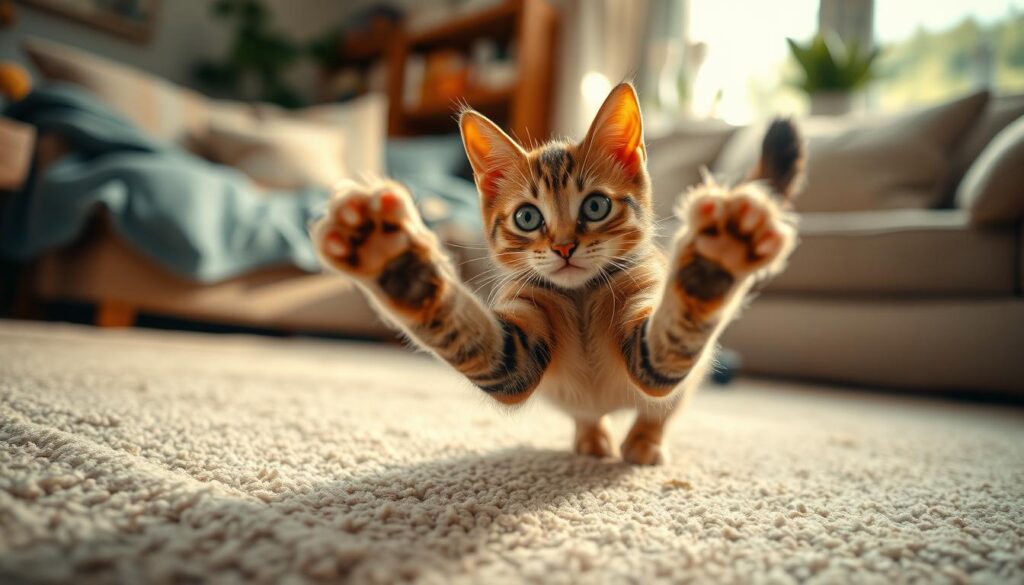
Mistake #2: Allowing Boredom and Lack of Stimulation
Indoor cats require mental and physical stimulation to thrive and stay healthy. Without adequate stimulation, cats can become bored, leading to a range of behavioral issues.
Signs Your Cat Is Understimulated
When cats are understimulated, they may exhibit behaviors such as excessive sleeping, overgrooming, destructive scratching, aggression, and attention-seeking behaviors. These signs indicate that your cat needs more stimulation in their environment.
The Consequences of Feline Boredom
Boredom can lead to various problems, including destructive behaviors, depression, and physical health issues. Cats that lack stimulation may resort to scratching furniture or other household items, causing damage to your home.
Enrichment Needs Based on Age and Personality
Different cats have varying needs for stimulation based on their age, breed, and personality. Young and active breeds, such as Bengals and Abyssinians, require more extensive enrichment, including interactive toys and play sessions, to keep them engaged and stimulated.
Providing a stimulating environment that includes vertical spaces, window perches, and puzzle feeders can help keep your cat engaged. Regularly rotating toys and engaging in interactive play can also help prevent boredom and related issues.
Mistake #3: Punishing Natural Cat Behaviors
One common mistake cat owners make is punishing their cats for exhibiting natural behaviors. Cats exhibit a range of behaviors that are instinctual, such as scratching, climbing, and hunting. Punishing these behaviors can lead to confusion and stress for the cat.
Why Punishment Doesn’t Work for Cats
Punishing your cat doesn’t work because they don’t associate the punishment with their behavior, especially if there’s a delay. Cats respond poorly to punishment, and it can damage the trust between you and your cat. Instead of punishing, it’s more effective to understand why your cat is behaving in a certain way.
Common Behaviors That Get Punished
Common natural behaviors that get punished include scratching furniture, jumping on counters, and play aggression. These behaviors are instinctual and not malicious. Punishing them can lead to fear and anxiety in cats.
Positive Reinforcement Alternatives
A more effective approach is to use positive reinforcement training. Reward your cat with treats, praise, and playtime when they exhibit desired behaviors. For example, providing a scratching post can redirect scratching behavior away from furniture. Clicker training is also a highly effective method for teaching alternative behaviors.
| Natural Behavior | Punishment Consequence | Positive Reinforcement Alternative |
|---|---|---|
| Scratching Furniture | Fear, Anxiety | Provide Scratching Post |
| Jumping on Counters | Avoidance Behavior | Offer Alternative Surfaces |
| Play Aggression | Increased Aggression | Engage in Play, Redirect Aggression |
Mistake #4: Neglecting Health and Wellness Needs
Ensuring your cat’s health and wellness is crucial for a long and happy life. Many cat owners unintentionally neglect their cat’s health needs, leading to preventable issues.
Skipping Regular Veterinary Visits
Regular vet visits are essential for maintaining your cat’s health. Your vet can provide vaccinations, perform physical exams, and detect health problems early. Many cat owners underestimate the importance of regular veterinary care.
The Declawing Controversy
Declawing is a painful and unnecessary procedure that can lead to lifelong health issues. Instead, provide appropriate scratching outlets like scratching posts or boards.
Overlooking Preventative Care
Preventative care, including vaccinations, parasite control, and dental care, is vital for long-term feline health. Indoor cats still need preventative medications as parasites can enter the home on shoes or other pets.
| Preventative Care | Importance |
|---|---|
| Vaccinations | Prevent serious diseases |
| Parasite Control | Protect against parasites |
| Dental Care | Prevent dental disease |
Mistake #5: Creating Unsafe Environments
Creating a safe environment for your cat involves more than just providing food and shelter; it requires awareness of potential household dangers. While keeping your cat indoors is the first step in protecting them from external risks like traffic and predators, your home can still pose significant threats to your cat’s health and safety.
Common Household Hazards for Cats
Many common household items can be hazardous to cats. Toxic substances such as cleaning products, medications, and certain foods must be stored securely out of reach. Some houseplants are also toxic to cats, and ingestion of string-like objects (e.g., yarn, ribbon) can lead to serious health issues, including intestinal blockage.
- Household chemicals like cleaners and antifreeze can be lethal even in small amounts.
- Securing dangerous items and being aware of less obvious hazards, such as reclining furniture mechanisms, is crucial.
Stress-Inducing Environmental Factors
Environmental stress factors can be as harmful as physical hazards, affecting your cat’s physical and mental health. Common stressors include overcrowding, insufficient resources (e.g., litter boxes, food stations), loud noises, and unpredictable routines. Ensuring enough litter boxes (following the rule of one per cat plus one extra) and providing safe spaces like elevated perches and hiding spots can help mitigate stress.
- Major household changes, such as renovations or new family members, can cause significant stress without proper management.
- Creating an enriched but safe environment requires balancing stimulation with security and predictability.
How to Correct Common Cat Behavior Mistakes

The key to correcting cat behavior lies in patience, consistency, and a deep understanding of feline behavior and psychology. Correcting cat behavior mistakes requires a multi-faceted approach.
To start, identify the mistakes you’re making and create a plan to address them systematically. Establish a consistent daily play routine with appropriate toys to prevent boredom and reduce problem behaviors.
Use clicker training and positive reinforcement with treats to teach alternative behaviors. Provide environmental enrichment, including climbing spaces and scratching posts.
Some key strategies include:
– Correcting cat behavior mistakes requires patience and understanding of feline psychology.
– Establish a consistent daily play routine with appropriate toys.
– Use clicker training and positive reinforcement with treats.
– Provide environmental enrichment.
– Schedule regular veterinary check-ups.
– Consider consulting a certified feline behaviorist for complex issues.
By following these steps and being consistent, you can help correct common cat behavior mistakes and strengthen your bond with your cat.
Conclusion: Building a Better Relationship With Your Cat
By understanding and respecting your cat’s natural behaviors, you can create a more harmonious household. Avoiding the five common mistakes outlined in this article is crucial. Investing time in proper play techniques and environmental enrichment creates a foundation for a strong human-cat bond.
Consult your vet when behavior issues arise to rule out medical causes. Creating a cat-friendly home means finding creative ways to meet both human and feline needs, ensuring a comfortable and loving environment for your cat.
